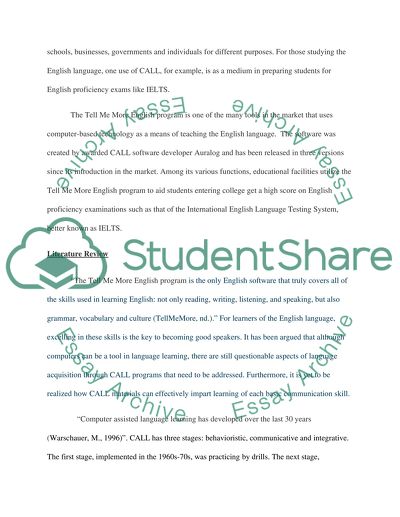Cite this document
(“A Computer Assisted Language Learning (CALL) Research Paper”, n.d.)
Retrieved from https://studentshare.org/family-consumer-science/1413588-a-computer-assisted-language-learning-call
Retrieved from https://studentshare.org/family-consumer-science/1413588-a-computer-assisted-language-learning-call
(A Computer Assisted Language Learning (CALL) Research Paper)
https://studentshare.org/family-consumer-science/1413588-a-computer-assisted-language-learning-call.
https://studentshare.org/family-consumer-science/1413588-a-computer-assisted-language-learning-call.
“A Computer Assisted Language Learning (CALL) Research Paper”, n.d. https://studentshare.org/family-consumer-science/1413588-a-computer-assisted-language-learning-call.


